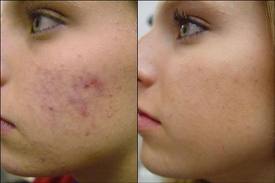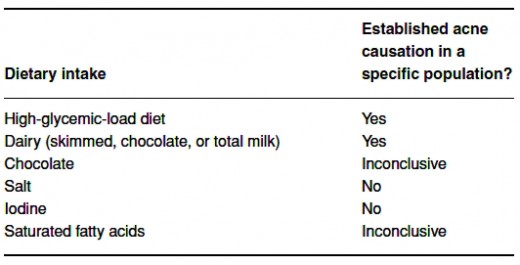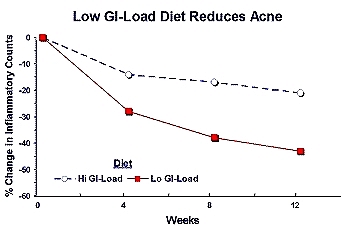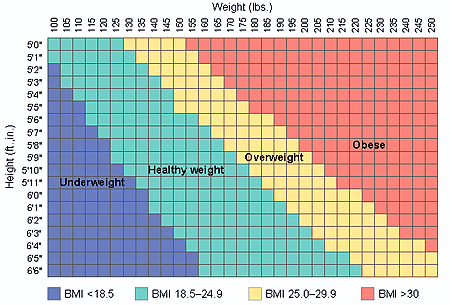Acne Risk Increased by Excess Weight, Obesity, Cow's Milk, High GI Diet
Acne prevalence has been linked to diet, but recent research suggests that being overweight itself may increase the risks of acne developing. Teenagers and young adults who are overweight, appear to have a higher prevalence of moderate to severe acne. Until recently this was largely an observation but several recent research studies have confirmed a link between high BMI (body weight by the square of height) and acne risks, especially for teenage girls. The reasons for this are unclear, but it may be related to hormones and the extra stress associated with being overweight. Obesity is often linked with an overproduction of androgens - natural steroids such as testosterone and estrogen. Androgens are related to sebum production, and the overproduction of sebum is one of the primary factors in acne development.

Sebum is an oily, waxy substance produced by the sebaceous glands in the skin to lubricate and waterproof the skin and hair of mammals. Overproduction of sebum is often linked with acne prevalence. Adolescent acne is typically caused by infected, clogged hair follicles. Normally, the sebum produced travels up the follicle to the skin surface and is released. Hormones may both increase the amount of sebum produced and cause follicular cells to proliferate, blocking the follicular opening and forming a pimple. Absolute follicle blockage causes closed pimples ('whiteheads'), whereas incomplete blockage of the follicles causes open pimples ('blackheads').
In various previous studies, the most commonly cited cause of acne, and the condition that makes it worse, is diet. The common links are to chocolate, high sugar foods (low GI), and oily or fatty foods. However, despite this, recent reviews of studies prior to 2007 concluded that the link to diet could not be confirmed, and that the primary cause was genetics and hormonal influences. Two large twin studies of twins, suggest that genetic factors alone do not fully account for the acne risk. Environmental influences, such as diet, modify the gene expression in the twins who have identical genetics.
A major review study published in 2009 looked at all the risk factors for acne by examining a large number of previous research studies. This review study found an association between cow’s milk intake, and acne incidence and severity. It also found that and intake of high-glycemic-index foods (high sugar and fat) caused an increase in the duration of acne. Other studies showed that low-glycemic-indexfoods and diet led to a reduction of the risk of acne. The review study showed that the association between acne and chocolate, salt and iodine were inconclusive.



Acne and Excessive Weight
The most recent study of weight and acne, published in the Archives of Dermatology included about 3,600 teenagers. The researchers looked closely at weight and various factors that could play a role in the development of acne. For example high-sugar junk foods like candy and soda, and high fat diets are thought to worsen acne and so the researchers were keen to eliminate all the factors that could confuse the results.
After adjusting for age, puberty, gender and diet the researchers found that obese or overweight teenagers, especially young women were significantly more prone to develop acne than adolescents with normal weight.
About 10 - 20 % of teenagers get moderate to severe acne, with many developing associated psychological issues and stress, poor self-esteem, depression and social problems.
In the study of adolescents age between 18 and 19 about 13 % of the girls were found to have acne. However for girls who were overweight or obese, the incidence of acne rose to 19 %.
For boys the incidence of acne was between 13-14 % percent regardless of their weight.
A previous study published in 2006, which involved 3,300 schoolchildren in Taiwan, found that a high body mass index created a higher risk for acne. Obese children with high BMI-for-age, regardless of their sex, had much higher rates of acne incidence. Schoolchildren with a BMI-for-age > 18.5 had higher incidence of acne, particularly the more serious inflammatory lesions.